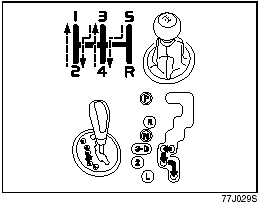Driving on Hills

Driving on Hills
• When climbing steep hills, the car may begin to slow down and show a lack of power. If this happens, you should shift to a lower gear so that the engine will again be operating in its normal power range. Shift rapidly to prevent the car from losing momentum.
• When driving down a hill, the engine should be used for braking by shifting to next lower gear. (Do this with EITHER an automatic or manual transaxle.)

WARNING:
Try not to hold the brake pedal down
too long or too often while going
down a steep or long hill. This could
cause the brakes to overheat, resulting
in reduced braking efficiency.
Failure to take this precaution could result in loss of vehicle control.
CAUTION:
When descending a down hill,
NEVER turn the ignition key to the
“OFF” position. Emission control
system and automatic transaxle (if
equipped) damage may result.
See also:
Automatic Transaxle Fluid
Specified Fluid
Use an automatic transaxle fluid equivalent
to DEXRON®-III.
Fluid Level Check
CAUTION:
Driving with too much or too little
fluid can damage the transaxle.
You must check the fl ...
Brakes
Brake Fluid
Check the brake fluid level by looking at
the reservoir in the engine compartment.
Check that the fluid level is between the
“MAX” and “MIN” lines. If the brake fluid
level ...
Driving on Slippery Roads
Driving on Slippery Roads
Under wet road conditions you should
drive at a lower speed than on dry roads
due to possible slippage of tires during
braking. When driving on icy, snow-covered,
or m ...
